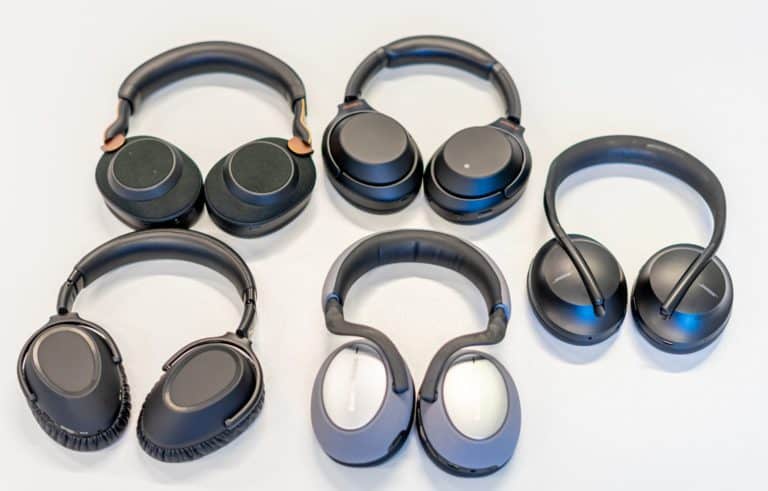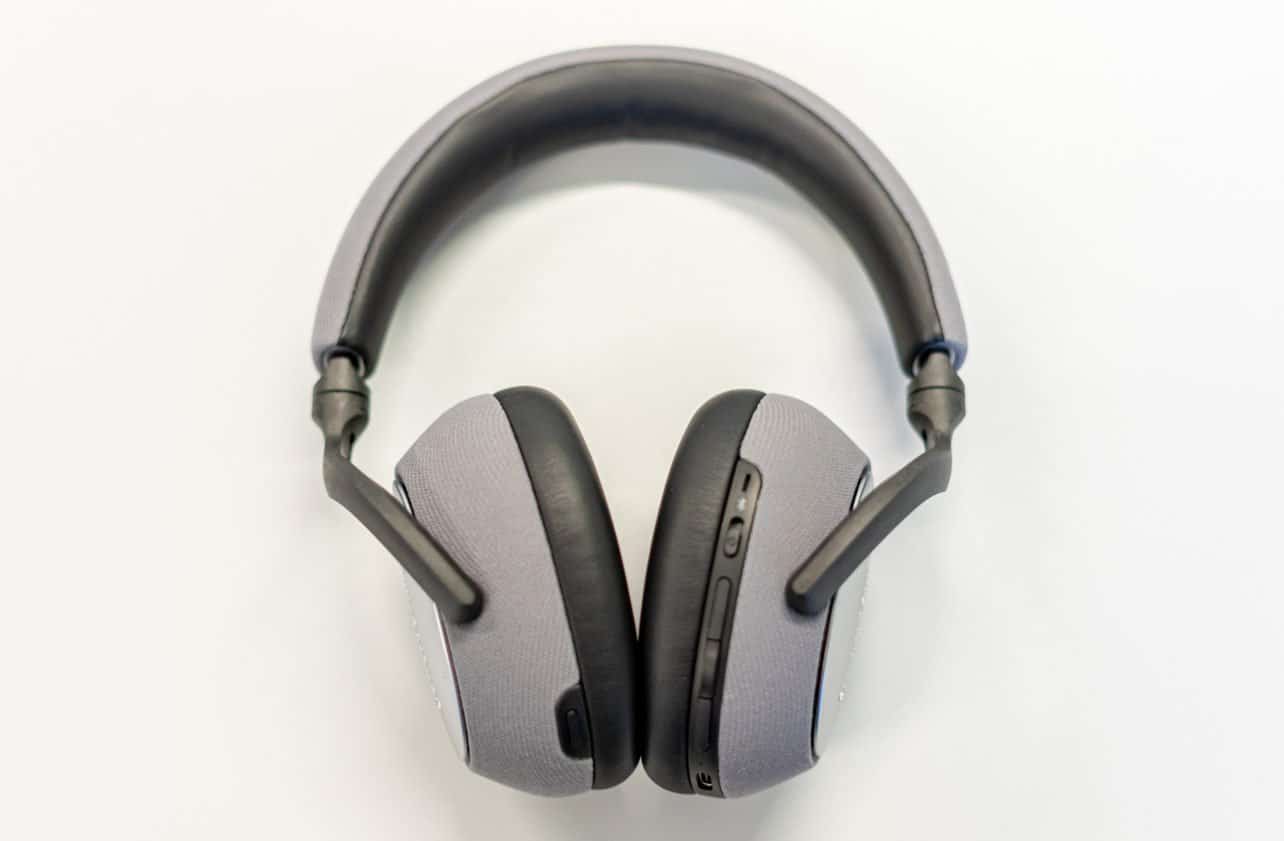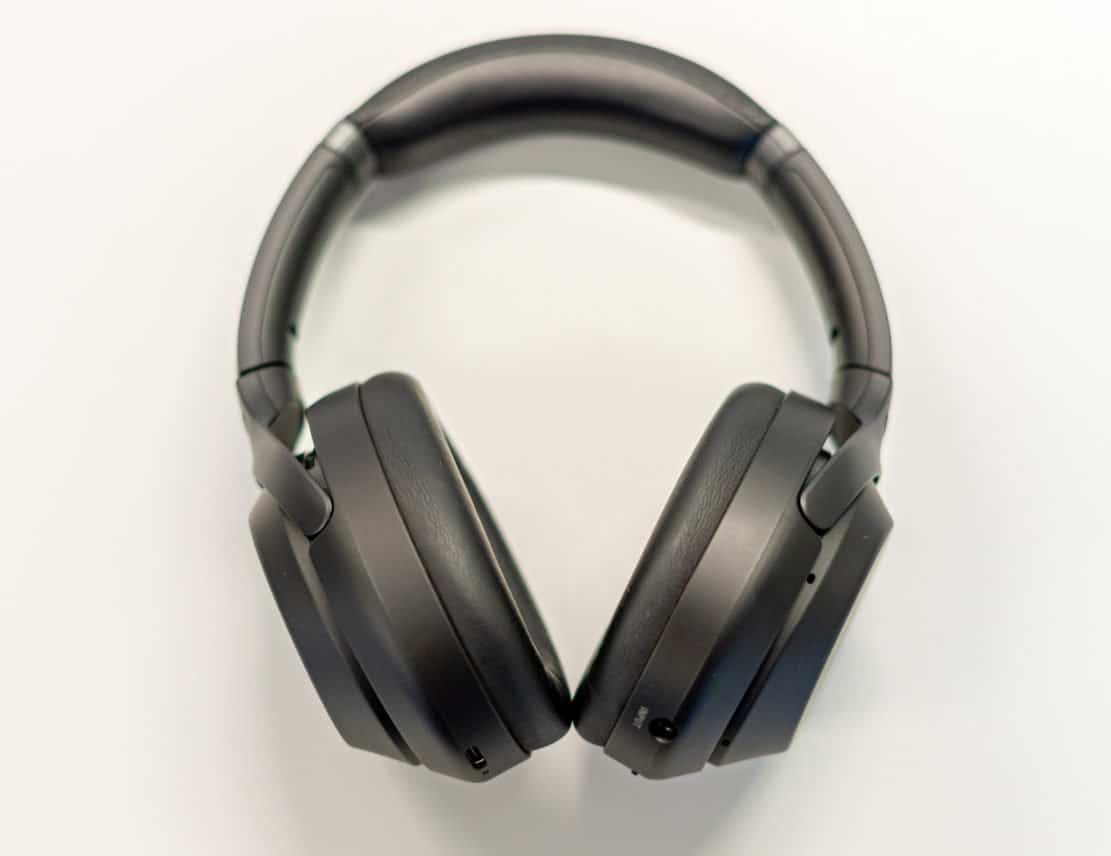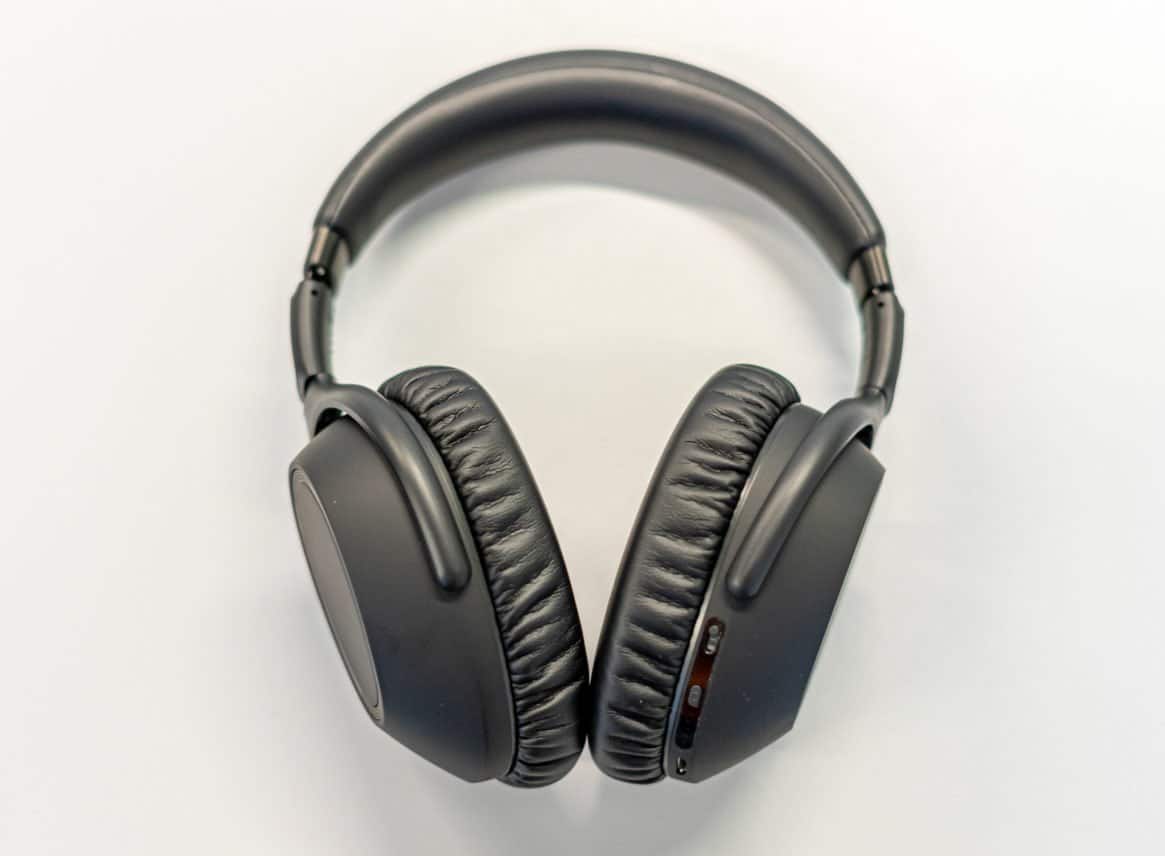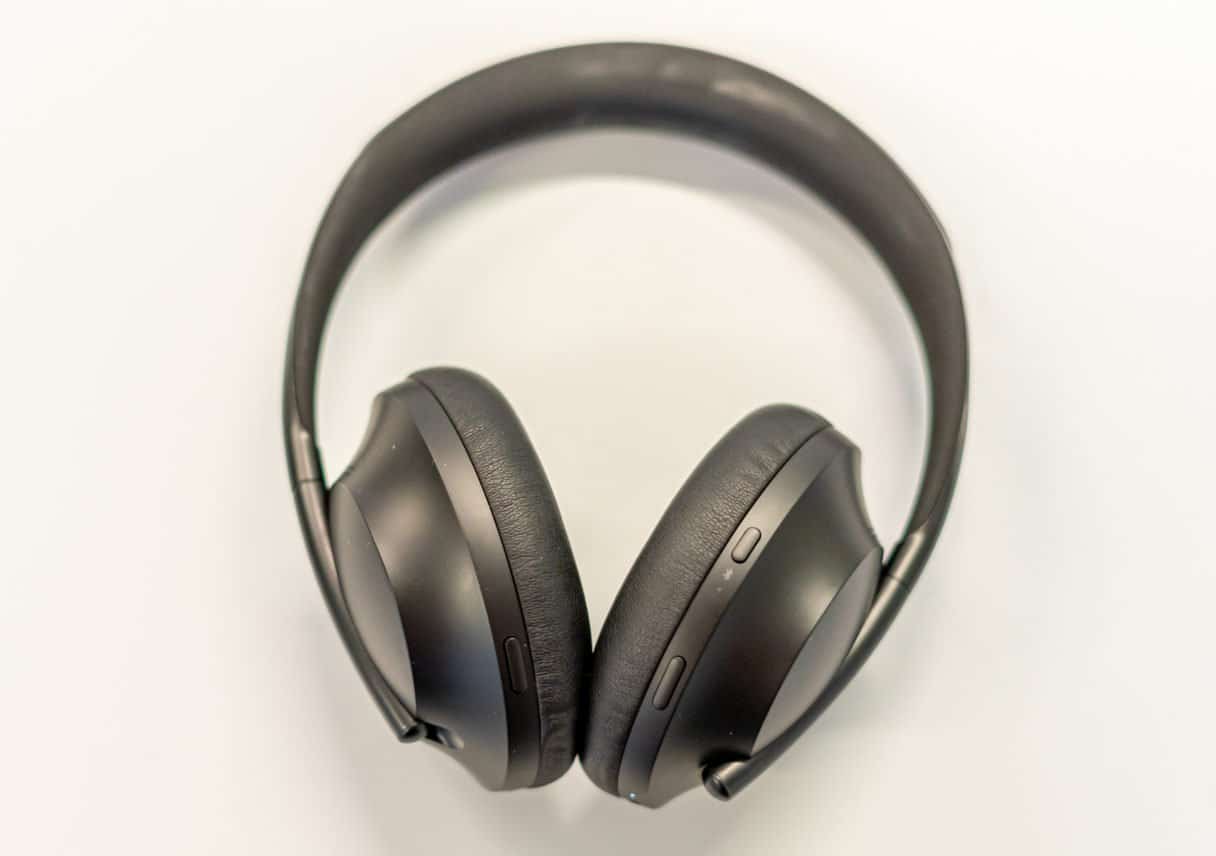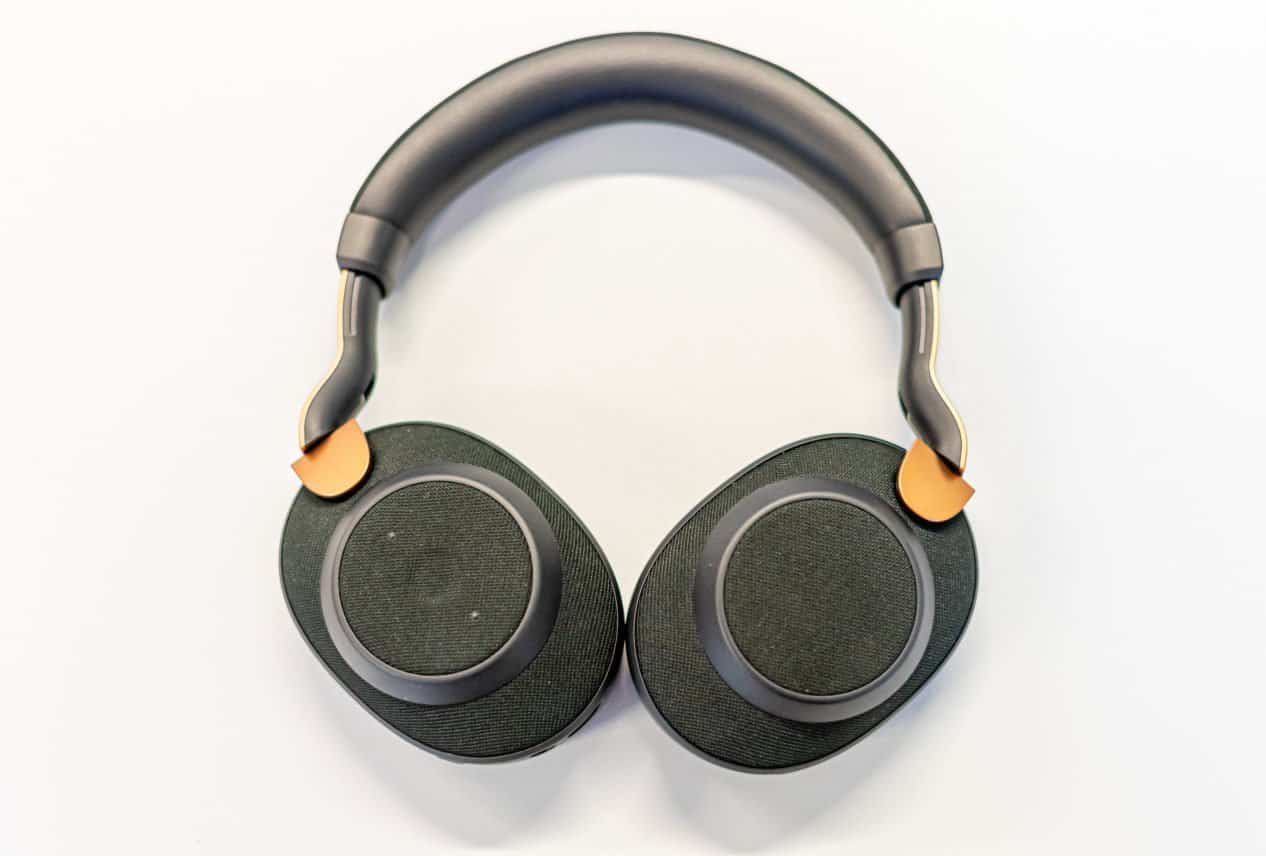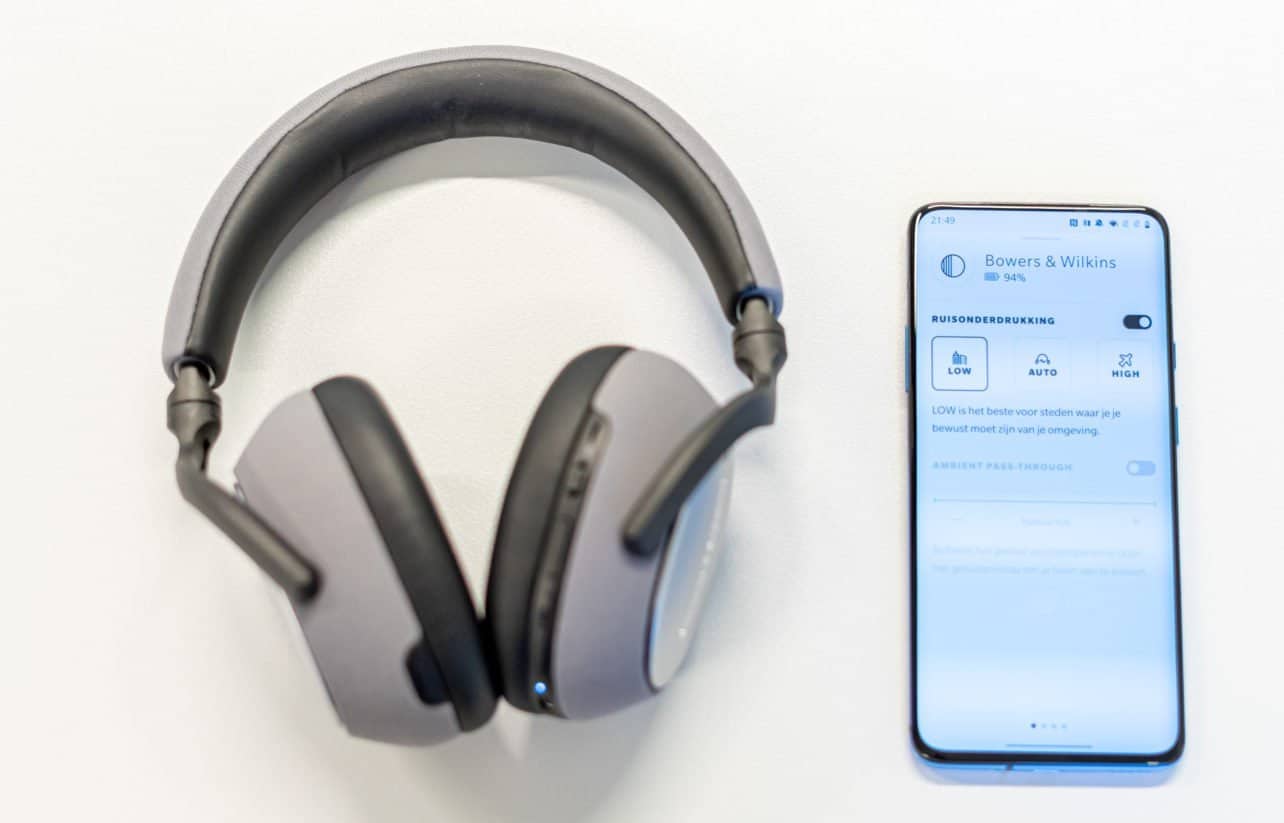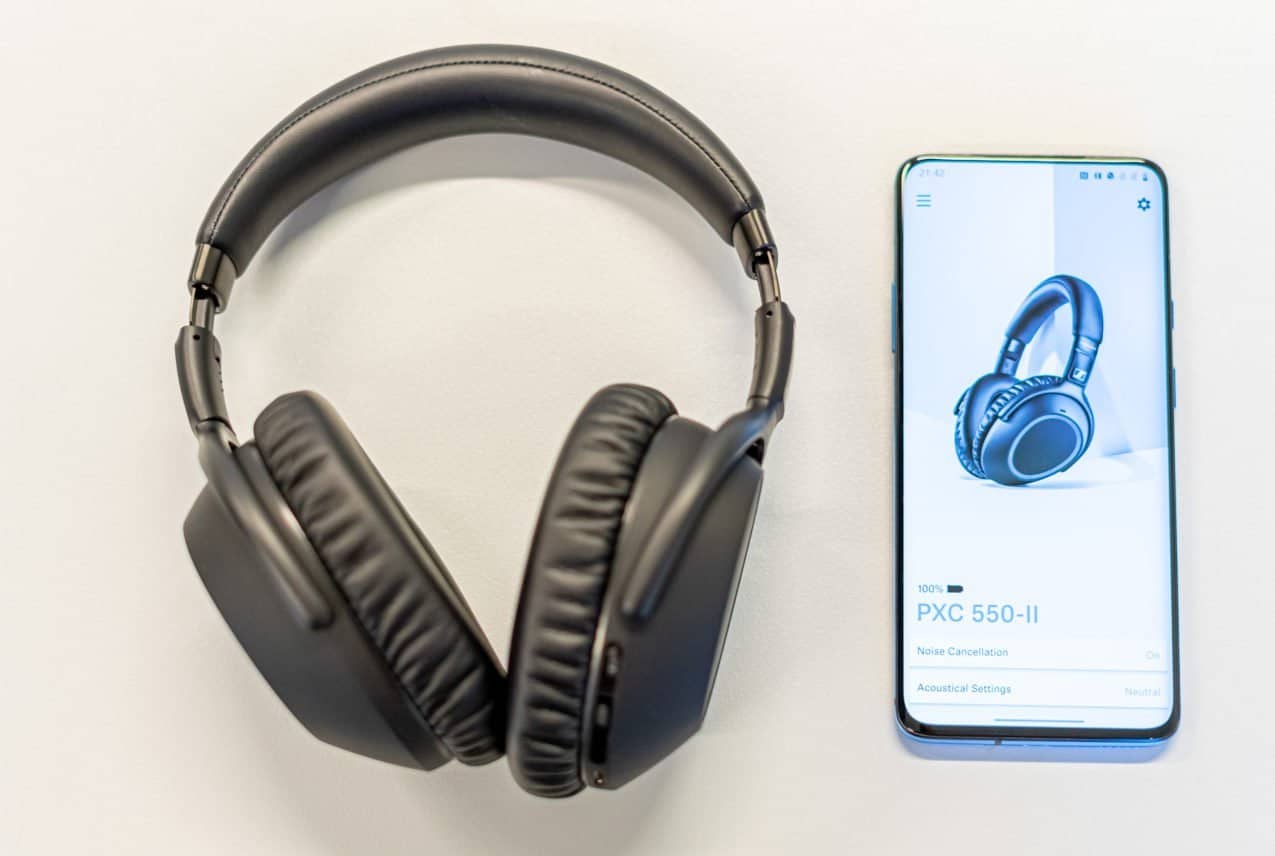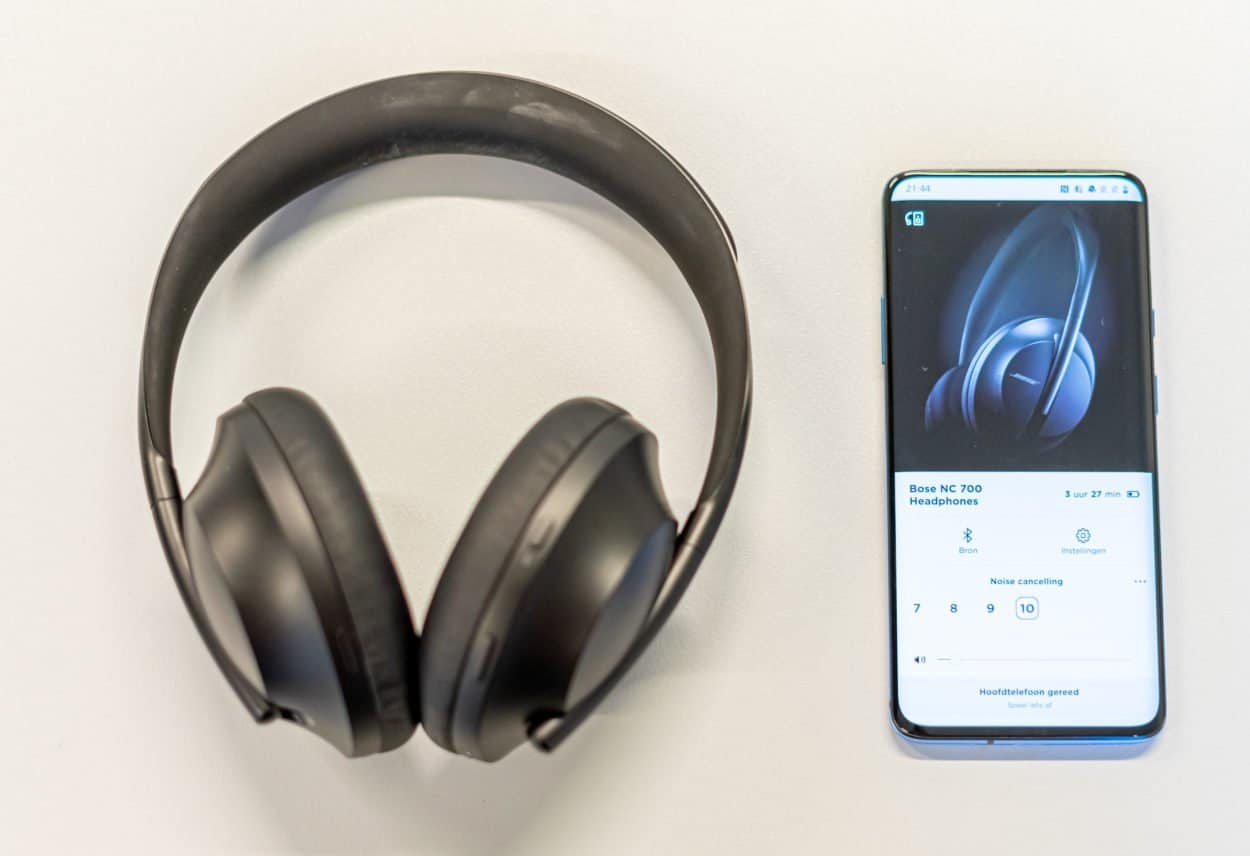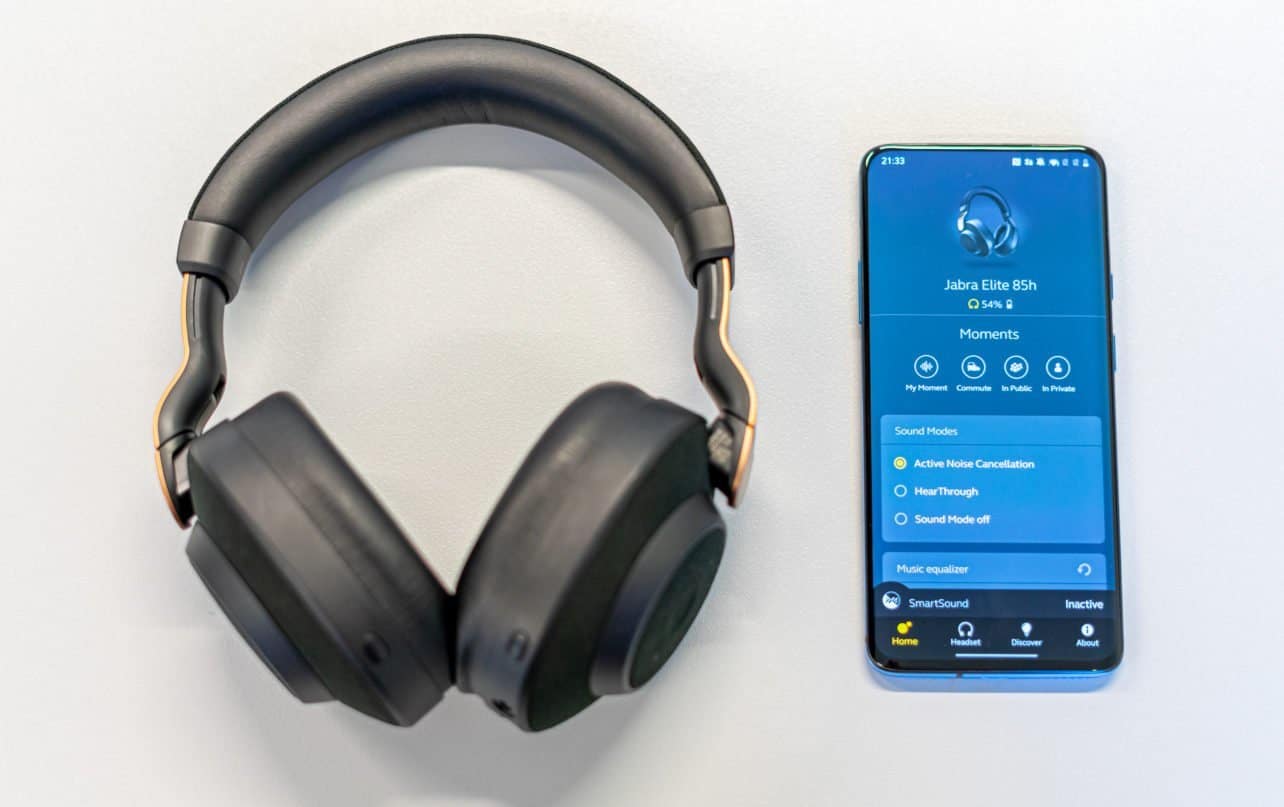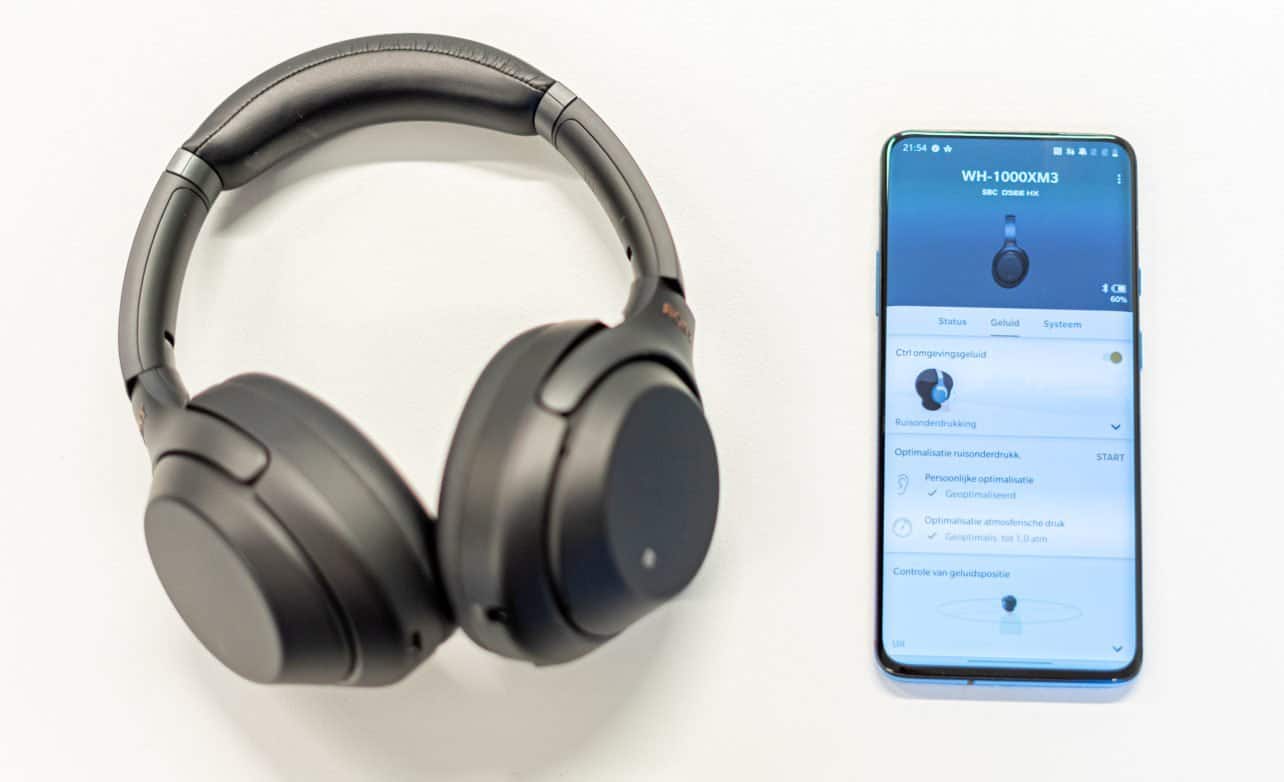Open offices might stimulate cooperation, but they can also be quite distracting. Fortunately, there are noise-cancelling headphones with active noise cancellation. These headphones are not only beneficial on planes or trains but also in the modern open office. Techzine went searching for the best noise-cancelling headphone for the office environment.
We compared five popular and generally highly rated models of noie cancelling headphones:
- The Bose Noise Cancelling Headphones 700
- The Bowers & Wilkins PX7
- The Jabra Elite 85h
- The Sony WH-1000XM3
- The Sennheiser PXC 550-II
Jabra and Sennheiser offer a business alternative to their headsets: the Jabra Evolve2 85 and Sennheiser Epos Adapt 660. We chose the consumer versions in this test because they are more than sufficient for non-specialized office use and are more comparable and affordable to the other headsets in this test.
We cover six important topics in this test: the design and the comfort of the headphones, the sound quality, the quality of the noise cancellation, the quality of the sound during a phone call and the extra features of the headsets and finally, the battery life.
Design and comfort
The appearance and colors of the headphones are a highly subjective matter, so we won’t go into that. But functionally, the designs of the headphones are all clearly different, and the comfort also varies. The latter is especially important if you frequently spend a long time on the plane or if you prefer to work for hours at a time in the office with your headphone on. Just a few hours of using a heavy or rigid headset can cause headaches, and that’s the last thing anybody wants to experience.
The Sony WH-1000XM3 and Sennheiser PXC 550-II score the best in terms of comfort. They are very light, have delicate soft ear cups, and the headband is not too stiff. For the Sennheiser you need to have small ears to wear it comfortably, because the ear cups have a pointy shape and are therefore a bit small. The Jabra Elite 85h and Bose Noise Cancelling Headphones 700 are slightly stiffer and heavier than the Sony and Sennheiser headsets, but still comfortable to wear for long periods of time. The Bowers & Wilkins PX7 stands out in a negative way: the headset is relatively heavy, and the headband is stiff, which puts a lot of pressure on your head. A few hours of using the headset causes mild headaches.
Most headsets nowadays are operated with touch gestures on one of the ear cups. This results in a sleek, button-less design, but takes some time getting used to. This applies to the Sennheiser, Sony and the Bose. Although they all have slightly different controls, there isn’t one that we distinctly prefer. The Jabra Elite 85h solves this problem nicely: the physical buttons are almost invisible on the sides of the ear cup and are easy to use. The Bowers & Wilkins PX7 is the only one that works purely with traditional buttons on the edges of the ear cup, which works great once you adjust to its placement.
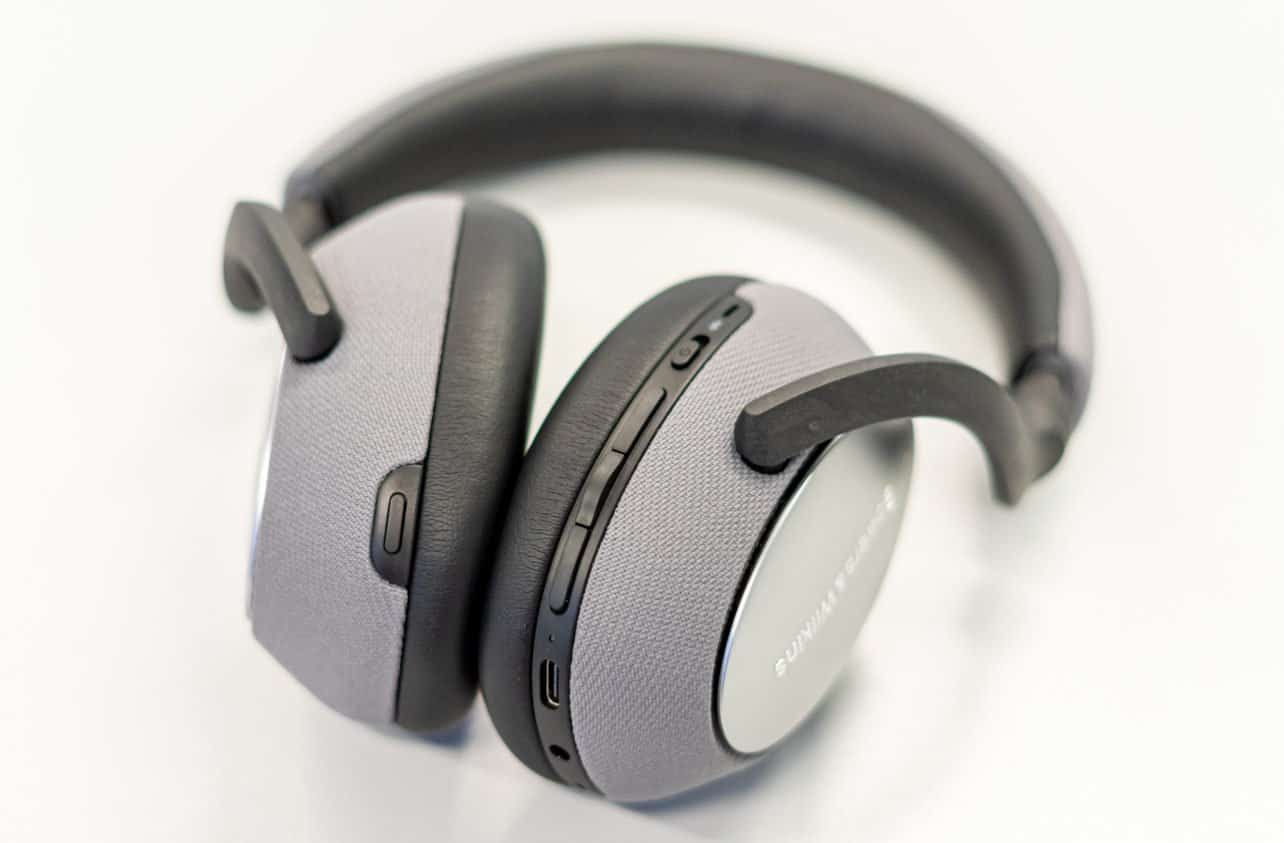
Although all of the headsets are primarily intended for wireless use, they can also be connected by cable. This is done using a supplied cable that can be connected to a 3.5mm jack. The Sony, B&W and Jabra also have a 3.5mm jack on the headset itself, which allows you to connect them with virtually any universal audio cable. The Bose and Sennheiser use a 2.5mm jack, which complicates the process of finding a replacement cable. The Sennheiser PXC 550-II has another disadvantage when it comes to its physical connectors: it is the only headset in the test with an outdated micro USB port.
Just a brief comment on looks: the Bose Noise Cancelling Headphones 700 and Bowers & Wilkins PX7 have the most outspoken designs, and we believe the B&W is particularly successful. Both headsets don’t fold, and the substantial weight and rigid housing is an added disadvantage of the Bowers & Wilkins. The Jabra Elite 85h ends up in the middle of the pack, in terms of aesthetics, connectors and comfort. The Sony WH-1000XM3 and Sennheiser PXC 550-II are a bit plain-looking but are the most comfortable headsets of the bunch. The Sony has our preference in terms of design and comfort: it is complete, features modern connectors and above all, it is nice, light-weight and comfortable. The Sennheiser also scores well in terms of weight and comfort but features very narrow ear cups and less used connectors.
Sound quality
When it comes to sound quality, it is important to mention that all five noise cancelling headphones score well. There are undoubtedly some differences, both in terms of quality and sound profile. For audio lovers, these differences are important; if you just want to work in peace while listening to background music, all of them are more than sufficient.
The Sony WH-1000XM3 and the Sennheiser PXC 550-II excel when it comes to sound quality. Both sound very detailed and spacious but have a completely different profile. Sony strongly emphasizes the low tones, which makes the music sound lively and exciting. Although it is not very realistic, it sounds great when you listen to a lot of electronic music. Sennheiser has put a strong focus on the high notes, which makes the music sound clear and detailed, but some genres lack a punch.
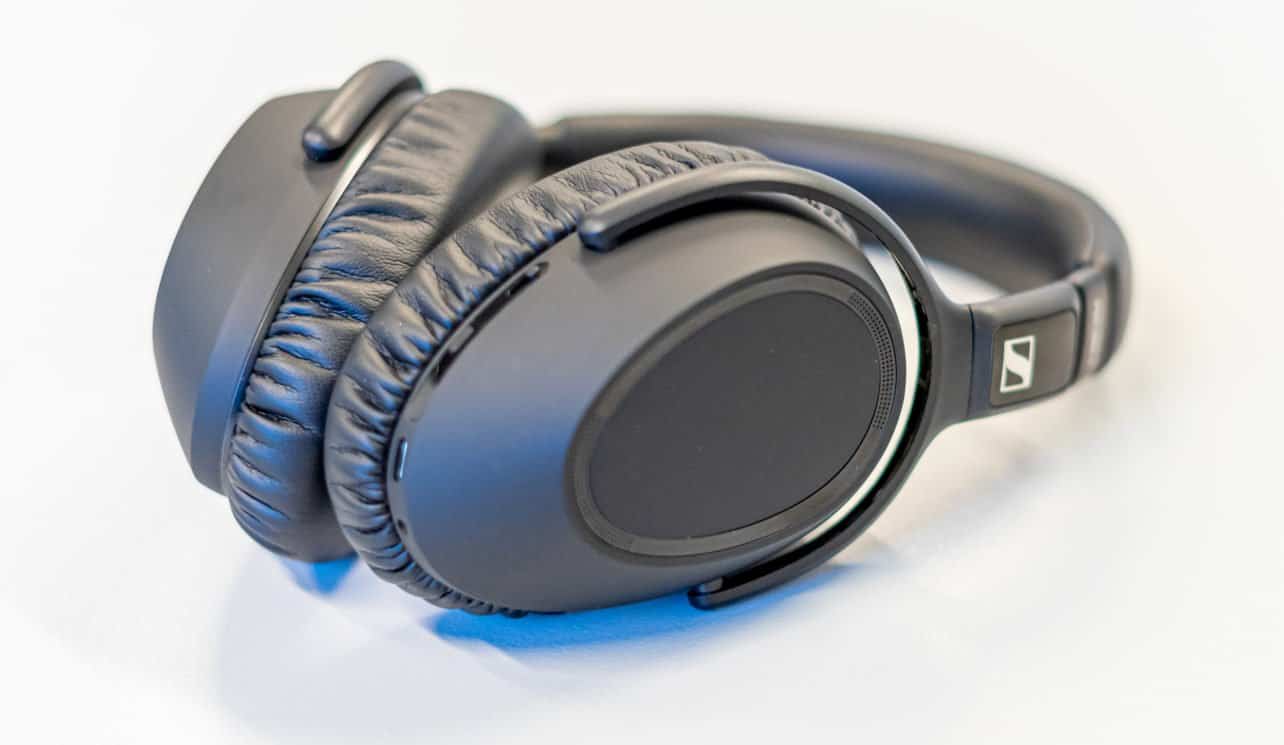
The Bowers & Wilkins PX7 has a beautifully balanced sound profile that hovers between the Sennheiser and Sony when it comes to tone. It may sound a bit less spacious, but still scores very well and is tuned in a more neutral way.
The Bose Noise Cancelling Headphones 700 and Jabra Elite 85h are both slightly underperforming in terms of sound quality. The headset from Bose has a considerable emphasis on the bass and sounds detailed, but also a bit subdued. The Jabra also sounds a bit subdued and puts a little more emphasis on the treble. Sometimes the treble doesn’t exactly come out well, which causes the headset to sound a bit shrill, although this is not annoying at all.
So, depending on your preferences, for the best sound quality, you should check out the Sony, Sennheiser or Bowers & Wilkins. The Bose and Jabra also sound great, but they have a more subdued sound than the other three headsets.
Noise reduction quality
The undisputed winner in terms of noise reduction is the Sony WH-1000XM3. Sony’s headset not only effectively filters out monotonous background noises like airplanes or trains, but is also pretty good at suppressing voices. This makes it particularly pleasant in the modern open office: talking colleagues will hardly bother you anymore.
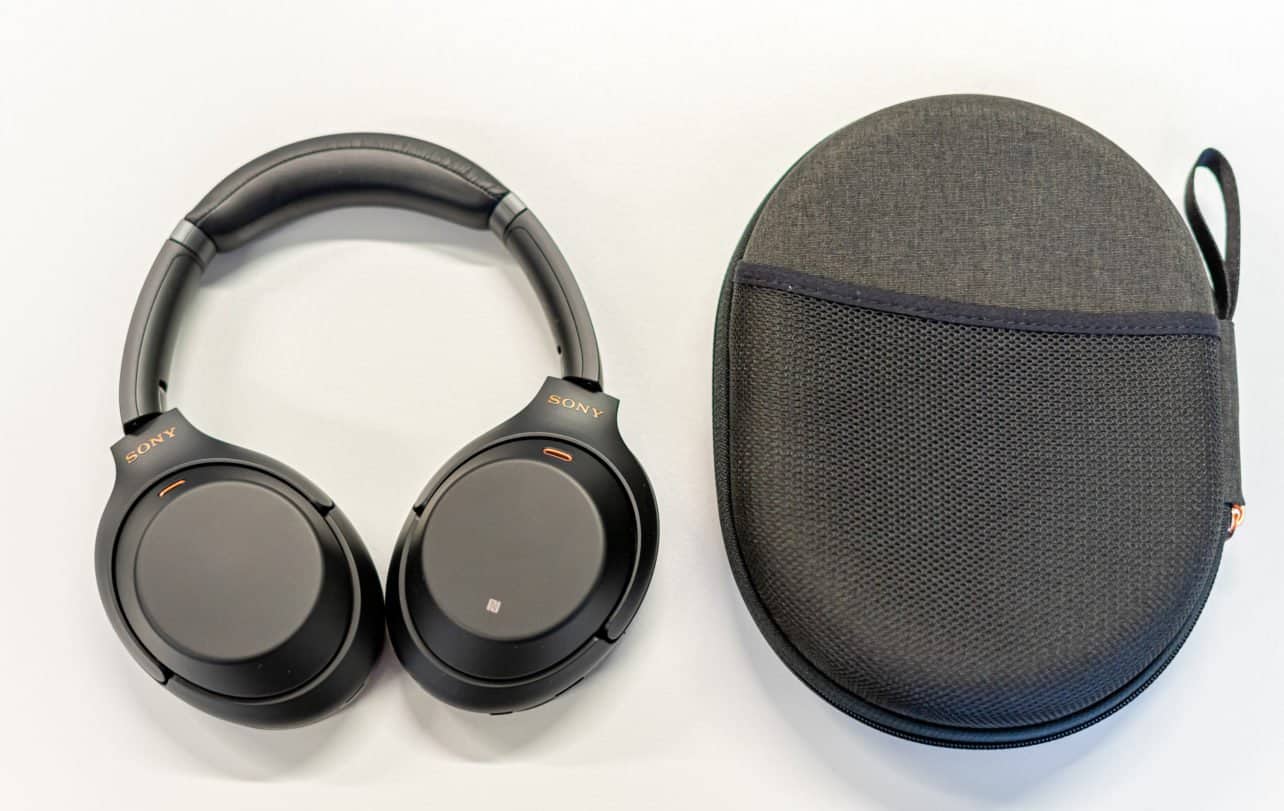
The Bose Noise Cancelling Headphones 700 ranks second. The headset performs exceptionally well when filtering out background noise and, just like the Sony, it also does a good job at filtering out higher and less predictable tones such as voices. The Sony headset performs slightly better, but the differences are minor, and the only way you’ll truly notice the differences is when you use the two headsets side by side.
The headsets from Sennheiser, Bowers & Wilkins and Jabra are clearly not as effective at filtering out voices, which is a disadvantage, especially in the office. The Sennheiser PXC 550-II and Bowers & Wilkins PX7 still score particularly well when it comes to filtering background noises, but both not quite match the Sony and Bose. The Jabra Elite 85h scores the worst of all headsets in this area but is still more than sufficient. The lower price of the headset justifies this.
Although all five headsets have good noise reduction, the Sony WH-1000XM3 and Bose Noise Cancelling Headphones 700 are clearly the winners here. Not only do they do the best job of filtering out background noise, but they are also the only two headsets that successfully filter out voices and other higher tones into the background.
Phone call quality
The primary purpose of these headsets is not to make phone calls. However, they can still be used for that purpose, and they provide sufficient quality to make a clear and understandable phone call. For those who want more of a focus on making phone calls, it is better to use a dedicated headset, such as the Jabra Evolve2 85 mentioned earlier.
If making phone calls is not the primary purpose of your headset, but you still want to be understood clearly? Then the Bose Noise Cancelling Headphones 700 and the Jabra Elite 85h are the best choices. These headsets both do a good job of recording your voice and filtering out ambient noise. The incoming sound quality is also excellent, although the Bose has a bit of an echo.
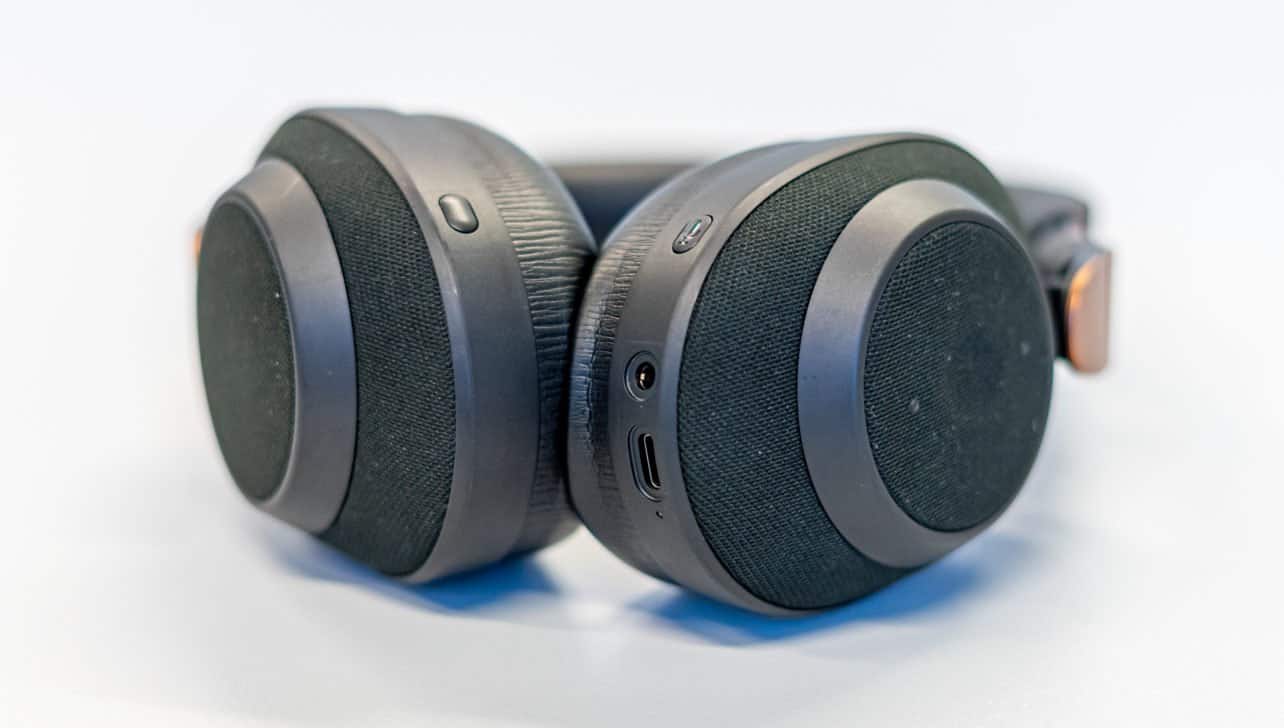
The Sennheiser PXC 550-II ranks third. The person on the other side of the phone call was able to hear us clearly during the test, although our voice sounded a little less natural than on the Bose and Jabra. The Sennheiser could’ve performed a bit better at filtering out the ambient noise. But the incoming voice felt very natural, and it sounded great.
The Sony WH-1000XM3 and Bowers & Wilkins PX7 came out the worst in terms of call quality. Although we can still be understood when we call with these headsets, our voice sounds further away than with the other headsets. With the Sony, we also sound a bit tinny, but the headset does a good job when filtering out ambient noise. The incoming audio sometimes creaks a bit and sounds quite subdued when you call with the Sony. The Bowers & Wilkins doesn’t filter out ambient noise nearly as well, and the incoming audio sounds somewhat tinny.
App & additional features
All headsets can be connected via Bluetooth, and it is convenient if you can connect several devices at the same time, especially in the office. For example, connecting your headset to your smartphone and your computer, so that if you receive a call while working, you can pick up the phone directly using the headset. The Sony WH-1000XM3 is the only one of the five tested headsets that does not support this feature; the other four headsets can be seamlessly connected to two devices at the same time.
Bowers & Wilkins, Sennheiser and Jabra headsets incorporate a sensor that registers when you take off the headset which pauses the music automatically. The Jabra and Sennheiser headsets completely switch off when you fold down the headset by rotating the ear cup. The other headsets use a power button and a timer that turns off the headset during long periods of inactivity.
Those who want to add extra functionality to their headset can download an app with additional features. All five headsets have an app, but the functionality varies widely. In all cases, you can set the level of active noise reduction; the headsets from Sony, Jabra and Sennheiser go a step further and also offer different modes for different situations. For example, the Sennheiser has a mode that reduces wind noise, and the Sony can change the amount of voice filtering depending on whether you are moving or standing still.
Via the app, you can also set up the headsets to work with a digital assistant. Four out of five headsets are compatible with digital assistants: only the Bowers & Wilkins PX7 doesn’t support this feature, and it’s the only headset that doesn’t include an equaliser in the app. Sony delivers the most extensive app. In addition to the aforementioned features, the headset also offers noise reduction optimisation your ear shaper and the air pressure, as well as various features to personalise and improve the sound quality. The Bose app is functionality-wise adequate, but often has difficulty recognising the connected headset.
From a functional point of view, there are considerable differences, and it is tricky to identify a winner. The app of the Sony WH-1000XM3 is quite extensive, but the headset does not switch off automatically and cannot connect to two devices simultaneously. Jabra’s headset contains these two features and also comes with an elaborate app, while Bowers & Wilkins is clearly lagging behind in terms of functionality due to the lack of a voice assistant.
Battery life
The battery life of the five headsets varies little and in most cases, is more than adequate. Jabra claims 32 hours of battery life while the headsets of Sony, Sennheiser, Bowers & Wilkins can all be used for up to 30 hours. The difference of two hours is negligible in real-life. The Bose Noise Cancelling Headphones 700 perform relatively poorly with 20 hours of battery life. But even then, it is unlikely that you will fully deplete the battery. The battery life of 20 hours is still more than sufficient for everyday use, and the headset notifies you of the number of hours of battery life left every time you turn it on. This way, you’ll never forget to charge it on time.
Conclusion
Headphones with active noise reduction have become increasingly popular in recent years, and nowadays there are plenty of good options available. This test proves that: all tested headsets provide great sound and filter out background noise. Suppressing higher and less predictable tones such as speech turns out to be more difficult: the Bose Noise Cancelling Headphones 700 and Sony WH-1000XM3 perform quite well, but they’re by no means perfect yet.
Sony WH-1000XM3
There is one headset that clearly stands out from the rest in overall quality: the Sony WH-1000XM3. It delivers excellent sound quality, has the best noise reduction and is incredibly comfortable. Additionally, because it is relatively old, it is very affordable with a price tag of around 250 euros. Disadvantages are the worse than average call quality and the fact that the headset can only connect to one device at a time.
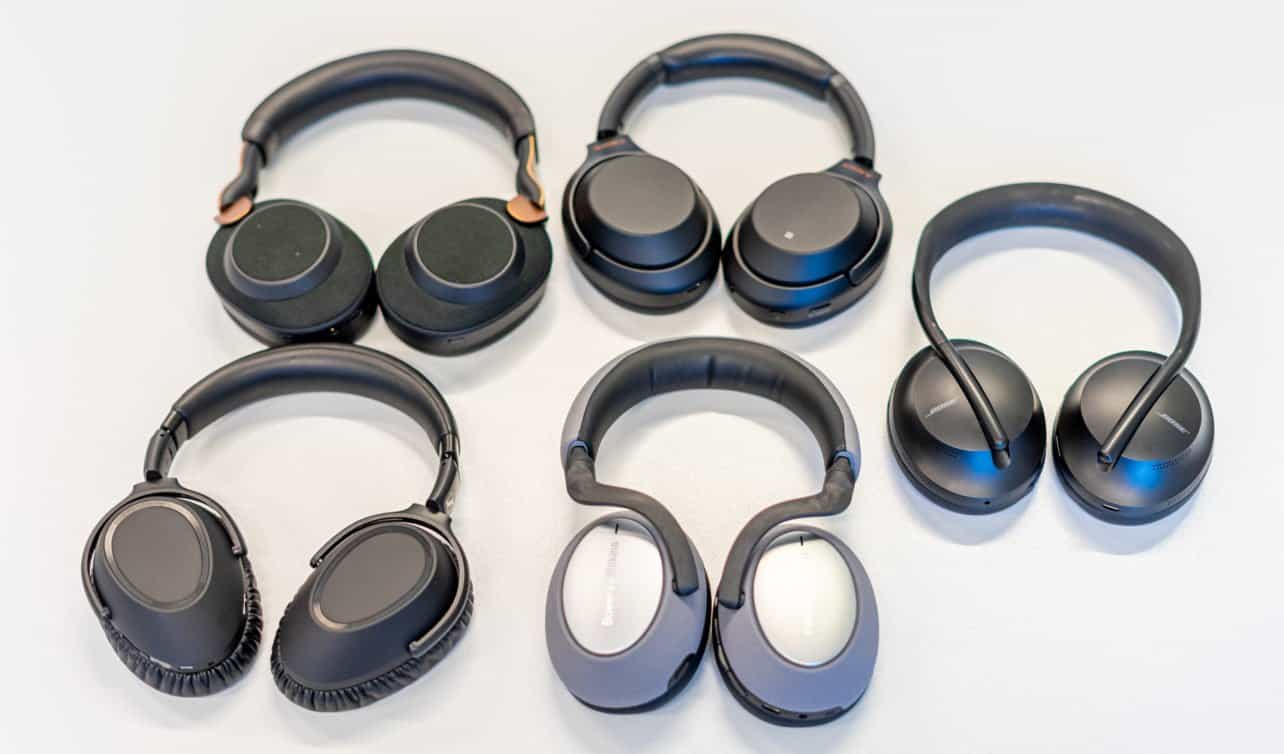
Sennheiser PXC 550-II
Do you make a lot of phone calls using your headphone? Then the Sennheiser PXC 550-II is the best headset for you. It does not excel in its call quality but still does a great job. It can connect to two devices simultaneously, the sound quality for music is good, and the noise reduction also works excellent. Provided your ears are not too big, the headset is also very comfortable, and the price of just 250 euros is very reasonable.
Bose Noise Cancelling Headphones 700
The Bose Noise Cancelling Headphones 700 is quite expensive, it costs 330 euros and doesn’t perform accordingly. The sound is average and underperforming for this price. The Bose comes second in terms of active noise cancellation, just behind the Sony. Overall there are better alternatives.
Bowers & Wilkins PX7
The Bowers & Wilkins PX7 is also relatively expensive with 320 euros and doesn’t live up to the price tag. The B&W has excellent sound quality, but there are cheaper alternatives that score equally well or better. The unique design makes the headphone unpleasant to wear long periods of time. In the end, the unique design and brand name are responsible for the hefty price tag.
Jabra Elite 85h
The Jabra Elite 85h scores in the mid-range in terms of design and is slightly worse than the other headsets with regards to sound quality and noise reduction. Its extensive functionality, great call quality and competitive price ensures that the headset is still worthwhile. It is the only headset in this test that you can acquire for less than 200 euros and as a result, it scores very well.
